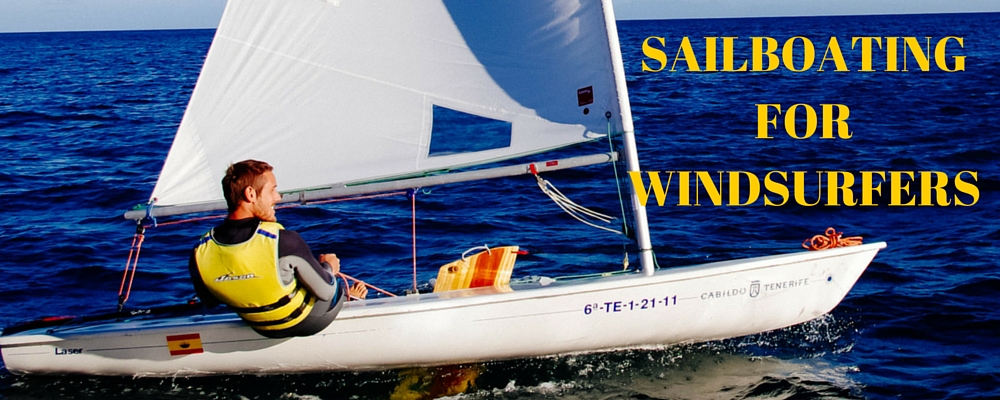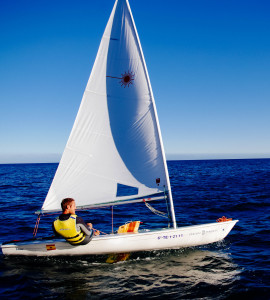I have given lessons to people from all walks of life. Beginners, people who haven’t windsurfed for 30 years, office slaves, musicians, guys with disabilities and girls with headscarves. The most exciting group to me however has always been athletes.
You can usually tell if someone does sport on a regular basis or if they used to compete in a physical activity. From pole vaulters to ice skate racers, footballers, basketballers, swimmers, skateboarders, surfers and skiers. All of these show a certain ease of learning in one form or another. The control these people have over their body is noticeable in nearly every case.
Sailboating for Windsurfers
There is one group however that sets itself far apart from the rest: sailors. Every single one of my students that has spent even as little as a weekend on a sailboat proved to get the feeling for windsurfing in an incredibly short amount of time.
Usually it takes a while for people to dare to lean back and trust the wind to hold them up. Most people will stick to balancing upright on the board while just putting a little power in the sail to start moving. It is an unnatural sensation to lean back and have the wind in the sail stop you from falling in the water. Overcoming this instinct of wanting to stand upright takes some time.
Sailors on the other hand already have the knowledge that the solution to not get pulled over forwards and get the most out of a sail is to lean back and counterbalance with their bodyweight. This gives them a huge advantage in the learning process.
I must add an exception to this rule. There is one boat type that has not demonstrated to be of any particular advantage and that is sailing yachts. Boats where the angle of attack of the sail is controlled by a winch.
On dinghys however, the sailor has to adjust the sails power with one hand while using their body position to compensate for the pull of the sail. How this translates to windsurfing always astonishes me.
Just recently I got the opportunity to teach windsurfing to Silvia Morales Gonzalez, who had just become world champion in the 4.7m laser category. With one hour per day for a week she got from knowing how to pull up the sail and advance, to planing in the harness and water starting when she fell in.
And last year I taught a team-mate of hers who was a couple of years older and it took him less time still!
I am glad that this is a rare case of progress because otherwise I would be out of a job!
This week I also taught a guy who has been more into catamaran sailing (hobie cat) and the result was nearly just as impressive. Naturally he didn’t have the thousands of hours that a world champion has but the advantage of knowing how to compensate the sails power with his bodyweight was obvious.
In conclusion, the experience that you get from sailing dinghys is directly translatable to handling a windsurf sail. It will greatly reduce the time it takes to shift from balancing upright on the board and using only a little power of the sail for propulsion to leaning back with the shoulders and using the sail power for both propulsion and balance. If there is even a shift necessary at all…
This is also a great incentive for people who live in places where windsurfing is not really practiced but have sailing clubs instead. To improve your windsurfing, go sailing!






Great article. I am a full time windsurfing coach and i understand what u wrote!
Thank you Samuel!